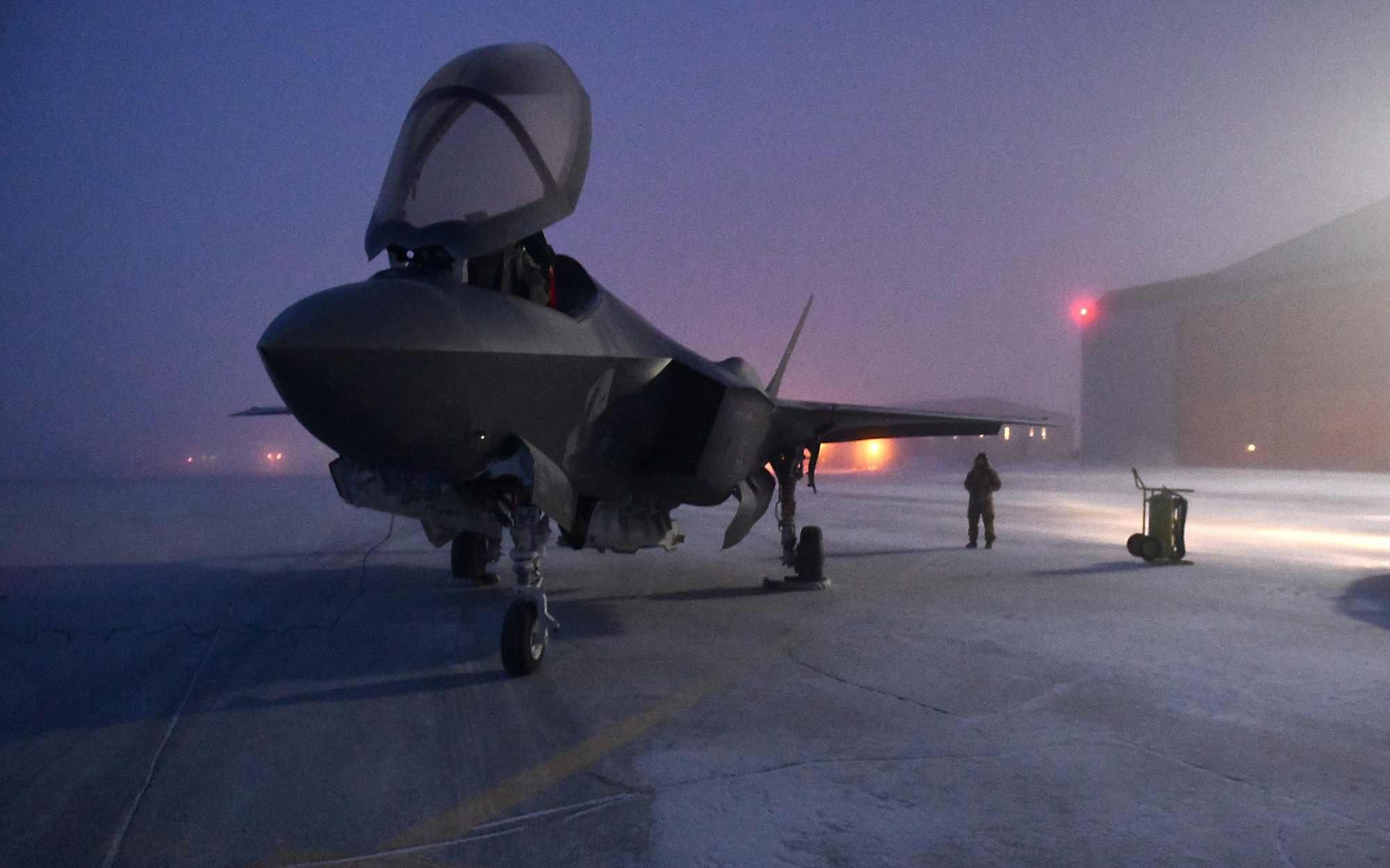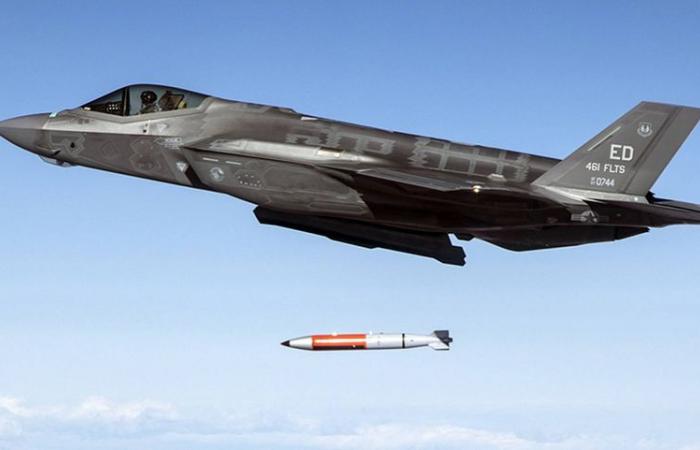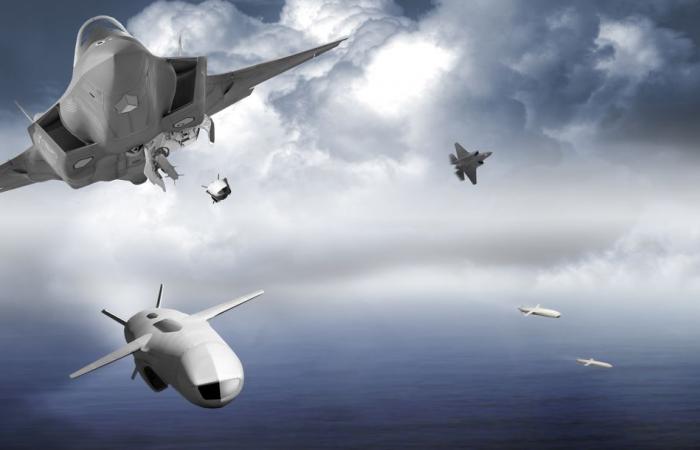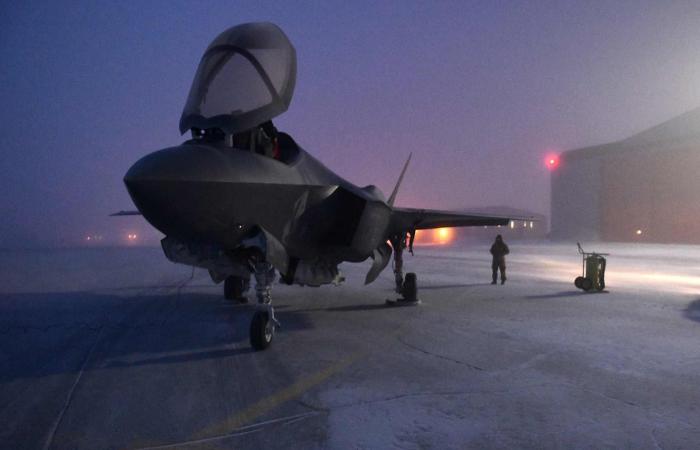Days after the Pentagon finally announced the decision to proceed with full-rate production of the F-35 Joint Strike Fighter, the Indo-Pacific command has indicated that it wants to triple its purchase of fifth-generation missiles for the F-35s.
Gripen vs F-16: UK Bets On SAAB Fighters To Outflank US Fighting Falcons For Thailand Deal
Air and Space Forces magazine reported that the Joint Strike Missile (JSM), an advanced standoff munition being developed for the Air Force’s F-35s, is one of the outstanding items on INDOPACOM’s underfunded priority list, which essentially includes items not included in the budget .
The budget documents showed that the US Air Force requested $165.9 million to purchase 50 Joint Strike Missiles in FY25, while the service wants to purchase at least 200 missiles.
However, as per the document obtained by the publication, INDOPACOM is requesting an additional $298.5 million for JSMs in its wish list to Congress for the next year. Given the $2.8 million price tag of each missile, INDOPACOM’s request, if approved, would almost triple the Air Force’s 2025 JSM procurement.
Adm. John C. Aquilino, the outgoing head of INDOPACOM, told lawmakers on March 20, “The threat has continued to grow and accelerate.” While the chief did not directly attribute the demand to a particular security threat, he has been admonishing China and warning US officials of an imminent threat from the expanding PLA military power in the Indo-Pacific.
He recently warned that the People’s Liberation Army (PLA) of China was expanding “on a scale not seen” since World War II to invade Taiwan.
“All indications point to the PLA meeting President Xi Jinping’s directive to be ready to invade Taiwan by 2027,” Aquilino said. “The PLA’s actions indicate their ability to meet Xi’s preferred timeline to unify Taiwan with mainland China by force if directed.”
The US is consistently making efforts to bolster its combat capability in the Indo-Pacific region. The INDOPAC documents indicate that the JSM is fast becoming a priority.
The USAF requested 48 JSMs in FY24 at an estimated cost of $129.2 million. In addition to the missiles, there are other expenses like testing and integration. Incidentally, the 2024 budget has yet to be passed.
The Air Force also desires additional JSMs. According to budget records, the service’s goal is to have 204 JSMs in total, less than the desired inventory objective of 240.
The Fiscal Responsibility Act, which limits the defense budget to 1 percent growth, caused financial constraints on the service. Officials stated that the necessary compromises the service had to make at that time hurt its procurement account.
The Air Force budget documents state, “Once the proposal for Lots 1 & 2 is received, procurement quantities may change based on the negotiated contract and available funding.”
Raytheon and the Norwegian defense company Kongsberg jointly produce the JSM. The fifth-generation missile will be carried internally in the stealthy F-35’s weapons bay. The alacrity to acquire more JSMs next year comes even as the Pentagon has decided that the F-35 will enter full-rate production.
“This is a major achievement for the F-35 program,” William LaPlante, the undersecretary of defense for acquisition and sustainment, said in the statement. “This decision — supported by my colleagues in the department — highlights to the services, F-35 cooperative program partners, and foreign military sales customers that the F-35 is stable and agile and that all statutory and regulatory requirements have been appropriately addressed. ”

Lockheed Martin is now manufacturing F-35s at about maximum capacity, with an annual production rate of roughly 150 aircraft. To date, the US Air Force, Navy, and Marine Corps, as well as allies and foreign military sales customers, have received over 990 F-35 aircraft.
The Joint Strike Missile
Raytheon and Kongsberg, a Norwegian defense manufacturer, have collaborated to produce the Joint Strike Missile (JSM), a fifth-generation, long-range, precision-guided, stand-off missile.
Kongsberg created the JSM missile system based on the proven Naval Strike Missile (NSM). Although it could be carried externally on other fighters, it is intended to be carried internally in the weapons bay of the covert F-35. Manufacturers estimate that the conventionally armed missile has a range of about 150 nautical miles.
Because of their size, other stealthy long-range cruise missiles, such as the AGM-158 JASSM (Joint Air-to-Surface Standoff Missile) and its Long Range Anti Ship Missile (LRASM) manufactured by Lockheed Martin, must be carried externally on F-35s. However, none of the missiles have been tested on the fifth-generation multirole fighter yet.
The JSM includes advanced mission planning to take advantage of land and maritime geography. It uses a low-altitude flight profile and a very precise navigation system. A sophisticated imaging infrared seeker supports automatic target recognition.
The missile system’s primary purpose is to engage land and naval targets by integrating with fixed-wing aircraft platforms. It can be used for naval fire support (NFS) and anti-surface warfare (ASuW) missions over land, in open waters, and in littoral zones.
The JSM is a 4-meter-long subsonic missile weighing 416 kilograms. It has a range of more than 275 kilometers and offers a low radar signature because it uses low-signature/stealth technologies and sophisticated composite materials. The missile system has tail fins, wings, and air intakes, and it offers the best flexibility when it comes to target engagement planning.

An F-35 stealth aircraft equipped with a stealthy JSM is a lethal combination due to its stealth-on-stealth feature. This feature may give the USAF the first-strike advantage over its adversaries in the Indo-Pacific. It would also allow the USAF to launch attacks from its frontline bases in the Indo-Pacific without being detected by the enemy air defenses.
The JSM’s front part has an image target seeker to distinguish between land and non-targets. The central part has a 125 kg HE fragmentation warhead and a fuel tank. The high-mobility JSM system has an accurate navigation system to facilitate flying near terrain. A sophisticated engagement planning system is deployed to precisely engage targets using local geographic data.
The missile can be launched from a distance to detect targets on land or in the sea. Additionally, it offers maritime control and sea denial throughout a large operational region. The missile system can also conduct long-range strike missions and naval fire support.
A data link that is compatible with both the Link 16 network and conventional military hardware is part of the Joint Strike Missile system. After launch, the missile can communicate with aircraft using a two-way network data link to share tactical data.
Additionally, it guarantees that during flight, operators will update targets, retarget, abort missions, and report bomb hits.









